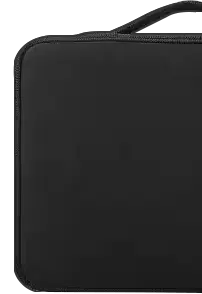What is DCE?
DCE, or Data Communication Equipment (also known as Data Circuit-Terminating Equipment), refers to devices like modems, CSU/DSUs, or multiplexers that connect data terminal equipment (DTE) to a communication network. In the OSI model, DCE operates at the physical layer (Layer 1), where it is responsible for signal transmission, voltage levels, connector pinouts, and clocking. These devices ensure that raw data is reliably transferred between devices across physical media like serial cables or telephone lines.
How does clocking work in DCE, and what is internal clocking?
In serial communication, DCE devices provide clocking signals that ensure synchronization between the transmitting and receiving devices. This clocking defines the rate at which data is transmitted and is especially crucial in synchronous communication systems. "Internal clocking" means the DCE generates its own clock signal rather than relying on an external source. DCEs like modems and CSU/DSUs often use internal clocking to maintain timing accuracy when connecting to DTE devices.
Which devices act as DCE, and what is the modem's role?
Devices such as modems, CSU/DSUs, multiplexers, satellite terminals, and certain routers with WAN ports serve as DCEs in network setups. They connect DTEs to communication networks and manage tasks like signal conversion, clocking, and synchronization. A modem specifically acts as a DCE by converting digital signals into analog telephone lines (modulation) and vice versa (demodulation), enabling internet or remote network access for DTEs like computers and routers.
What is the difference between DCE and DTE?
DCE (Data Communication Equipment) and DTE (Data Terminal Equipment) differ in their roles and connections. DTE devices like computers generate and receive data, while DCEs like modems transmit that data over networks. In terms of connectors, DTE typically transmits on pin 2 and receives on pin 3 in RS-232 connections, whereas DCE reverses this. This complementary pin-out enables direct connections between DTE and DCE using straight-through cables without the need for a crossover.
What does DCE do in data transmission and framing?
DCE devices perform essential tasks in data transmission, such as signal modulation, synchronization, and conversion for network compatibility. In packet-switched networks, DCEs also manage data framing by encapsulating user data into structured packets with headers and error checks. This ensures accurate delivery across the network. With protocols like X.25 or HDLC, DCE devices maintain reliable framing, which is critical for routing and decoding information on modern telecom infrastructures.
How do DCE devices convert between different signal types?
DCE devices convert between digital signals used by computers (DTE) and analog or digital transmission signals suitable for communication over networks. For example, a modem-one common DCE, modulates digital data into analog signals for telephone lines and demodulates incoming analog signals back to digital form. In digital-only environments, DCE may perform signal shaping, line coding, or voltage level conversions to comply with network standards and ensure proper transmission.
What is the purpose of a CSU/DSU as a DCE?
A CSU/DSU (Channel Service Unit/Data Service Unit) is a type of DCE that connects a DTE, like a router, to a digital circuit such as a T1 or E1 line. The CSU conditions the digital signal for network transmission, while the DSU manages timing and ensures protocol compatibility. Together, they provide line termination, signal regeneration, and clocking. CSU/DSUs are essential in leased-line environments where they enable reliable digital data communication.
How does a multiplexer work as a DCE?
A multiplexer is a device that combines multiple data streams into a single signal over one communication channel, maximizing bandwidth efficiency. As a DCE, it connects to DTEs and transmits combined data to a network. The multiplexer handles signal coordination, timing, and data separation at the receiving end. In this role, it simplifies network design and supports multiple users or devices sharing a single transmission medium, especially in WAN and telecom environments.
What is the significance of RS‑232 in DCE communications?
RS-232 is a widely used standard for serial communication that defines electrical signaling, connector pinouts, and signal functions between DTE and DCE devices. In DCE communications, RS-232 governs how modems and other serial DCEs interact with computers, ensuring compatibility and signal reliability. It also standardizes control signals like RTS (Request to Send) and CTS (Clear to Send), facilitating hardware flow control. RS-232 remains foundational in serial port configurations and legacy systems.
How are DCE and DTE devices connected by cable?
DCE and DTE devices are typically connected using serial cables such as RS-232, RS-449, V.35, or DB9/DB25 connectors, depending on the standard and speed requirements. The cables follow a straight-through configuration for DCE-DTE pairs, ensuring that transmit and receive lines align correctly. In cases where two similar types (e.g., DTE-DTE) must communicate, a crossover or null modem cable is used to swap necessary pins and facilitate bi-directional communication.
What happens when two DCEs are connected without a crossover cable?
When two DCE devices are connected without a crossover or null modem cable, their transmit and receive lines do not align, leading to a communication failure. Both devices attempt to send and receive on the same pins, which results in data loss or no connection at all. A crossover cable swaps the transmit and receive lines to ensure compatibility. Proper cabling is critical to maintain communication between devices of the same type.
How are serial links configured with DCE on Cisco routers?
When using serial links with a DCE interface on Cisco routers, you must configure the clock rate on the router's DCE port. This sets the timing for synchronous communication and ensures proper data transmission between devices. The clock rate command (e.g., clock rate 64000) defines the speed at which bits are transmitted. Without this setting, the DTE will lack the necessary timing reference, leading to communication errors or a down interface.
What are interface standards like X.21 and X.25 in relation to DCE?
X.21 and X.25 are interface and network standards often associated with DCE. X.21 defines the electrical and signaling interface between DCE and DTE for digital transmission, primarily in European telecommunications. X.25, on the other hand, is a packet-switched network protocol that outlines how DCE and DTE exchange packets over public networks. Both standards ensure interoperability and reliable data exchange across different vendors and network infrastructures.
How does DCE ensure compatibility between different types of DTE devices?
DCE devices act as intermediaries that standardize data transmission, ensuring compatibility between various DTE (Data Terminal Equipment) devices. They achieve this by converting signal formats, maintaining consistent voltage levels, and following communication protocols like RS-232 or X.25. This allows devices from different systems to communicate reliably across the same network. By adhering to interface and signaling standards, DCEs eliminate compatibility issues that would otherwise arise between diverse DTE endpoints.
Should DCE or DTE provide the clock signal in a synchronous serial connection?
In a synchronous serial connection, the DCE device is responsible for providing the clock signal. This clocking ensures that both transmitting and receiving devices stay synchronized during data exchange. The DTE, such as a router or computer, receives this signal and uses it to interpret the timing of incoming bits accurately. This DCE-supplied clock is essential for error-free data transfer and is a key element in serial communication protocols like HDLC and PPP.













